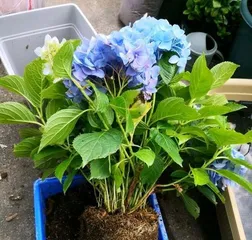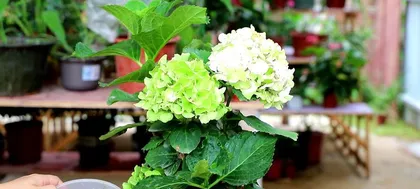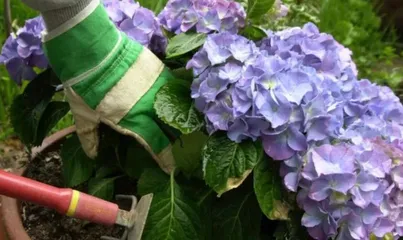Hydrangeas are widely cultivated ornamental plants with gorgeous and colorful flowers, and they are very easy to care for, making them perfect for home planting. This article will share some care tips for hydrangeas to help you create a beautiful garden.

Soil Selection
Choose soil that is rich in organic matter and well-draining, with a pH between 6.0 and 6.5 to ensure the hydrangeas grow normally.
Lighting Conditions
Hydrangeas love plenty of sunlight, but they can be easily damaged by strong midday sun. It is recommended to provide sufficient exposure in the morning or evening.

Water Management
During the growing season, it is important to keep the soil moist, but do not overwater to prevent root rot. At the same time, reduce the amount of watering when the temperature is lower in winter.
Regular Fertilization
Apply fertilizer once in the spring and autumn each year. You can use organic fertilizer or compound fertilizer. Do not over-fertilize, as it will affect the growth of flowers.
Pruning Management
After the flowers have withered, you can prune them appropriately to keep the plant's shape neat, which is also beneficial for the flowering season of the next batch.

Pest and Disease Prevention
Hydrangeas are susceptible to pests such as aphids and mites, and are also prone to diseases such as anthracnose and mold. Regularly spraying insecticides and fungicides can effectively prevent these problems.
Winter Protection
In the cold winter, it is necessary to protect the hydrangeas. You can cover them with a thick layer of fallen leaves or grass clippings to maintain the plant's temperature.
Transplanting Tips
If transplanting is necessary, it should be done in the spring or autumn. Before transplanting, water the plant to make the soil moist, so as not to damage the root system.
Propagation Techniques
Hydrangeas can be propagated by cuttings or division. Take cuttings in the spring or summer, select healthy and strong branches, and insert them into seedling soil.
Flowering Period Management
The flowering period of hydrangeas is relatively short. It is recommended to apply appropriate fertilizer before the flowering period to promote the growth and blooming of flowers.
Sunlight Requirements
Hydrangeas need plenty of sunlight during their growing period, but in high summer temperatures, it is also necessary to avoid prolonged exposure to prevent the leaves from getting sunburned.
Use of Chemicals
When applying pesticides, fungicides, and other chemicals, be sure to follow the instructions on the label for the method and dosage, and avoid causing harm to humans and the environment.
Preventing Waterlogging
When watering, be careful to avoid water accumulating at the bottom of the pot or at the base of the trunk, as this can affect the normal growth of the plant.
Pay Attention to Temperature Changes
Hydrangeas prefer a warm climate, but in high summer temperatures, appropriate cooling measures should be taken to ensure the plant grows healthily.
Key Care Points
The above are the care tips for hydrangeas. The key points include soil selection, lighting conditions, water management, fertilization, pruning, pest and disease prevention, winter protection, transplanting techniques, propagation techniques, flowering period management, sunlight requirements, use of chemicals, preventing waterlogging, and paying attention to temperature changes. As long as we master these techniques, we can easily grow beautiful hydrangeas.